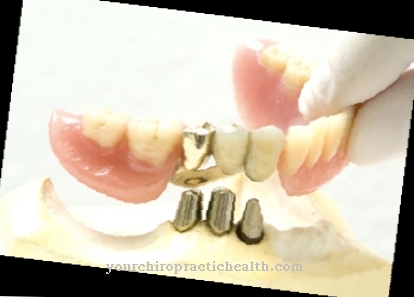In Germany around 5000 babies are per year Water birth brought into the world. This birth method is a specific form of delivery that takes place in a water-filled birthing tub. A water birth has advantages for the pregnant woman and the unborn child.
What speaks for a water birth
A Water birth has some advantages. The birth is a very intimate moment. In the protection of the water, the pregnant woman has more privacy and feels more comfortable. In addition, a water birth is less painful for the mother. The signer can relax in the warm water and feels that the contractions are less painful.
There is weightlessness in the water. This fact has a positive effect on the mobility of the expectant mother. The warm water also calms the muscles and can accelerate the birth process. Unpleasant side effects of childbirth, such as the perineal tear, are less common with water births.
The process is less stressful for mother and child than a regular birth. If some requirements are met, for example the completion of the 37th week of pregnancy, a water birth can be performed. If carried out properly and if possible contraindications, such as infections with certain viruses, are excluded, water births do not represent an increased risk compared to conventional births.
How does a water birth work?
A water birth can take place in a birthing center, in a clinic or on an outpatient basis. However, not every facility has a birthing pool. The pregnant woman can consciously choose the water method before giving birth and get used to the bathtub beforehand. In addition, courses are offered that prepare for the special birth method. The woman in labor is in the tub during the entire process.
This means that not only the opening and expulsion phase, but also the postpartum phase can take place in this device. The temperature of the water can affect the process. While warm water has a calming effect especially at the beginning, a little colder water can accelerate the birth in a later phase. A midwife and, if necessary, a doctor accompany the pregnant woman during the entire water birth.
In the meantime, the child's heartbeat and the mother's contractions are continuously monitored in order to be able to act immediately in the event of a complication. In addition, there is at least one other person in the room to help the pregnant woman out of the water as quickly as possible if there are problems. If desired or not otherwise possible, the water birth can be stopped at any time and continued outside the tub.
After the expulsion phase, the child is lifted out of the water after just a few seconds and draws in air independently for the first time. Infants do not breathe in until they are on the surface because they have an innate diving reflex. Until then, the child will be supplied with oxygen via the umbilical cord. As soon as the child is born, it is cleansed and cut off from the mother, as in a regular birth. The postpartum phase, during which the placenta is rejected, can also be carried out in water.
Requirements for a water birth
There are various requirements that should be met in order to be able to perform a safe water birth. It is important that the 37th week of pregnancy is already over. In addition, the child should lie normally in the uterus. Breeched unborn babies should not be born in water.
The danger is that in this case there is not enough view for the obstetrician in the water to prevent possible complications. In addition, it should be ruled out that the mother is expecting twins. Waterbirth is also not recommended if epidural anesthesia is necessary.
Epidural anesthesia, or PDA for short, means the anesthesia of regions close to the spinal cord for the purpose of a painless medical process. With a PDA, the mother cannot leave the tub on her own if she has difficulties during childbirth. Experts therefore advise against giving birth in water under this anesthetic. It should also be ensured that the baby has a normal heartbeat.
Conventional delivery is preferable if the heart rate is irregular, as the midwives and doctors can care for the child outside the tub more quickly. Another requirement is that no infections occurred during pregnancy. It is also important that there is no previous illness such as infection with hepatitis B viruses or diabetes mellitus.
What does a water birth mean for a child?
A water birth is more comfortable for the child than a regular birth. It is warm in the body and in the amniotic fluid. A birth in warm water instead of in the air is therefore associated with a small temperature difference and less stress. Water also has a dampening effect. At first, the child only perceives light and noise in a weakened form, which is less stressful. Any tension in the child is also more easily released in water than in air.
What are the risks of a water birth?
A water birth carries very little risk for mother and child. It can be dangerous if a water birth is carried out despite a contraindication, such as a breech position of the child. The fear that the newborns could inhale too much water in the tub and choke on them is unfounded.
Due to the diving reflex that is innate in all infants, the child will only breathe in on the surface of the water. An infection of the child through leaking blood during birth is also very unlikely. A water birth is already a recognized alternative method to conventional birth in bed. If all security checks are carried out properly and the requirements for such a birth method are met, it does not pose a higher risk for mother and child than a regular birth.

















.jpg)



.jpg)

.jpg)




